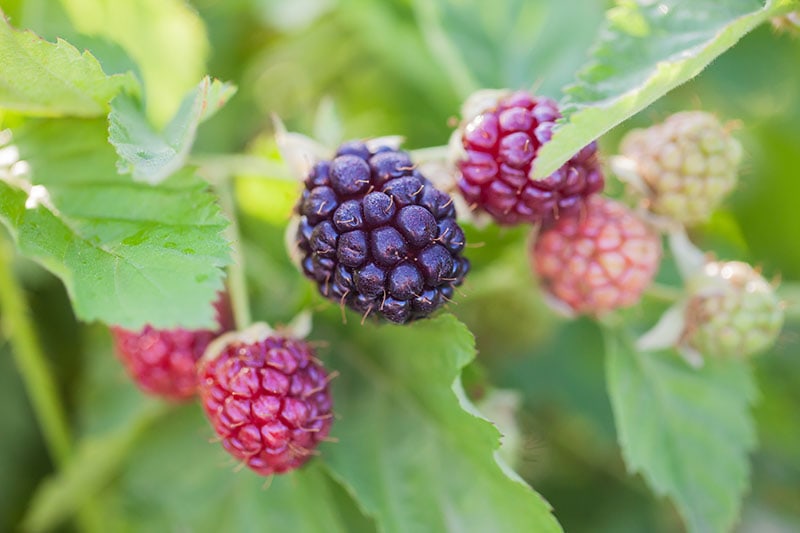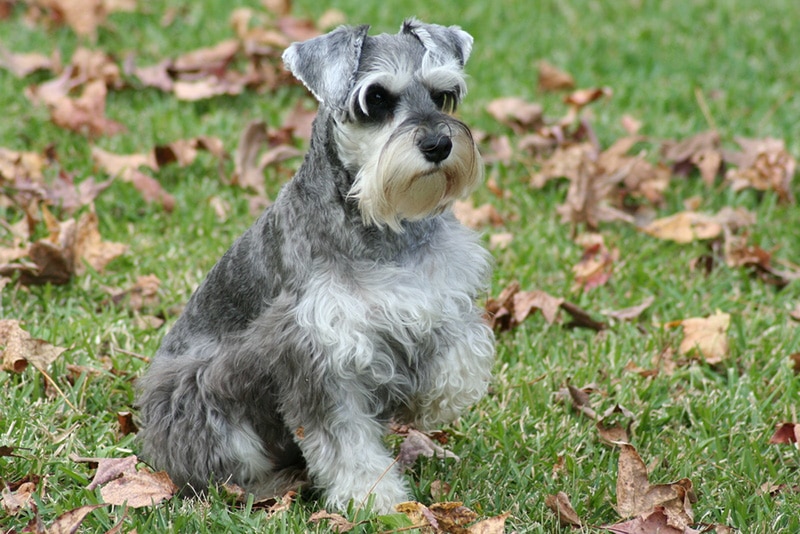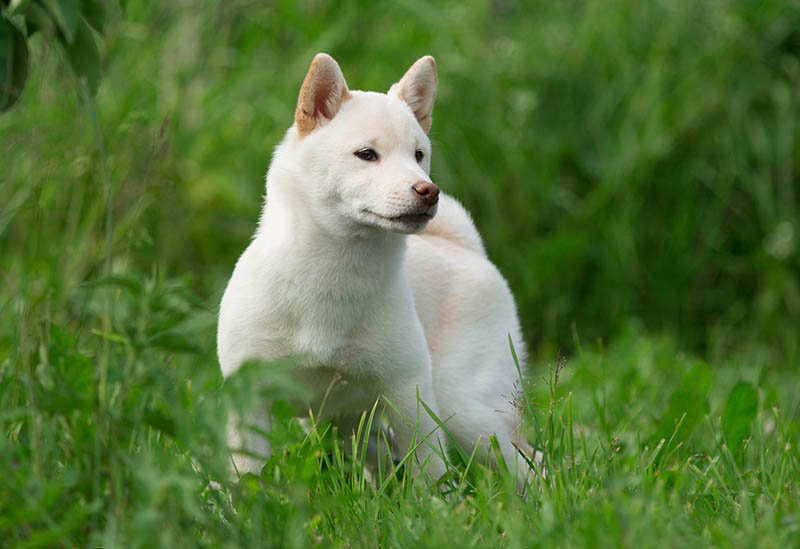Japanese vs American Akita: Differences Explained (With Pictures)
By Adam Mann
Updated on
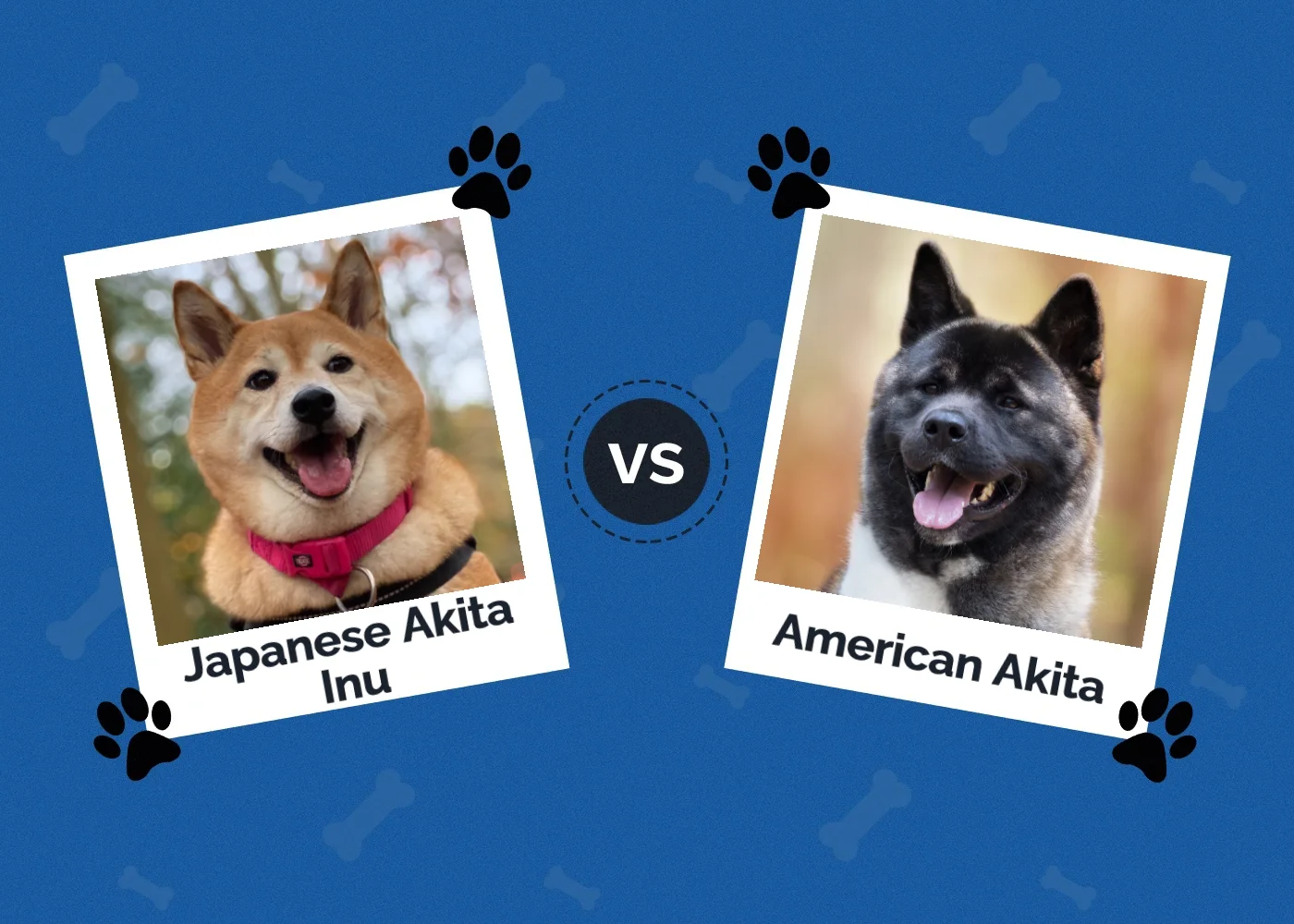
Click to Skip Ahead
While both the Japanese Akita Inu and the American Akita are Akita breeds, there are tons of differences between the two. And while many sites claim that the only real difference between the two breeds is their size, that couldn’t be further from the truth.
Sure, there’s a massive size difference between the two breeds, but they both have unique personalities that are completely different from each other. We’ve highlighted everything that’s different between the two breeds for you here.
Visual Differences
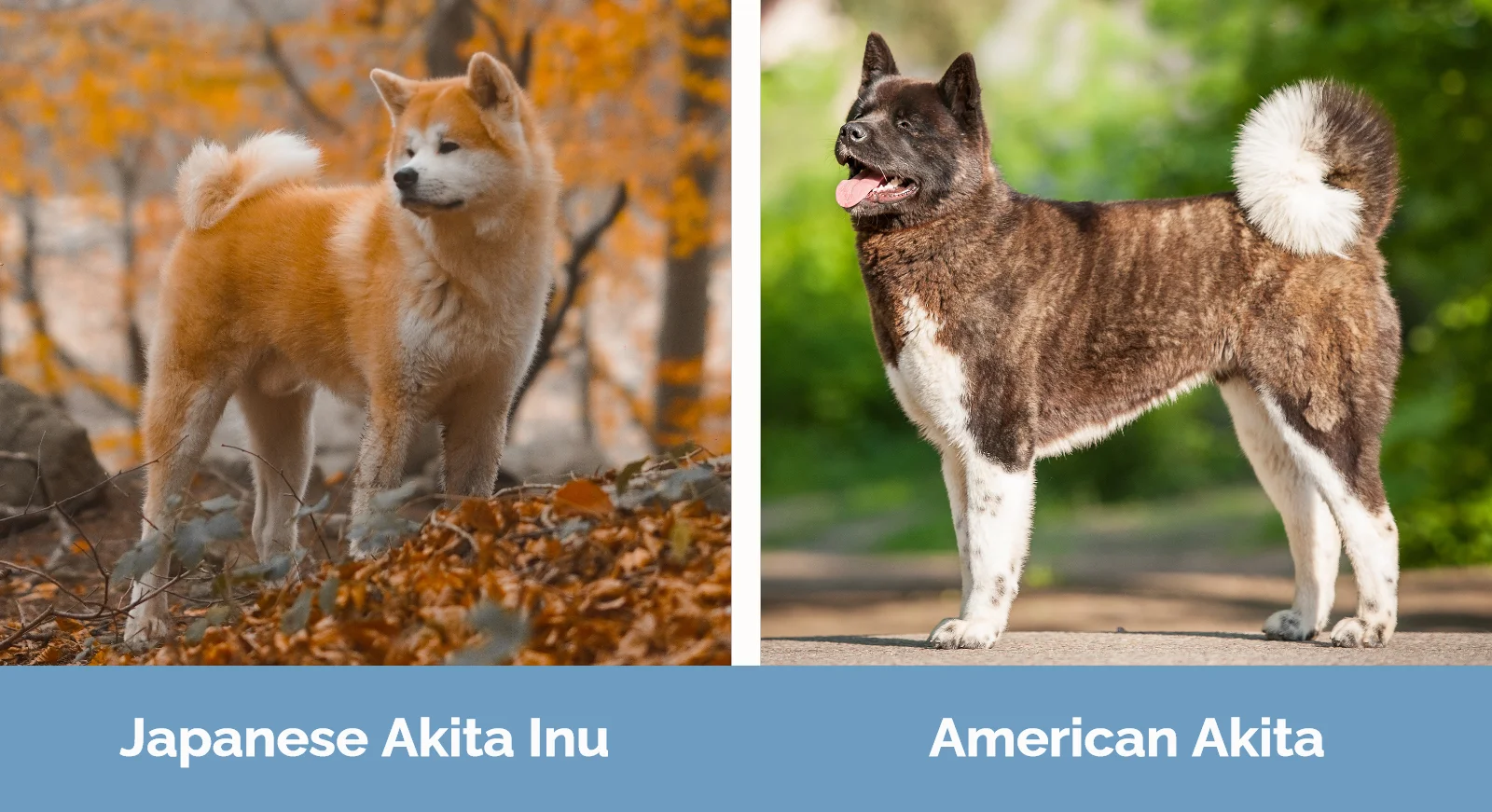
At a Glance
- Average height (adult): 25–27½ inches
- Average weight (adult): 55–75 pounds
- Lifespan: 10–12 years
- Exercise: 1+ hours a day
- Grooming needs: Excessive
- Family-friendly: Yes
- Other pet-friendly: Rarely
- Trainability: Stubborn but loving, lots of consistency required
- Average height (adult): 24–28 inches
- Average weight (adult): 70–130 pounds
- Lifespan: 10–14 years
- Exercise: 1.5+ hours a day
- Grooming needs: Moderate
- Family-friendly: Often
- Other pet-friendly: Rarely
- Trainability: Intelligent but can be stubborn, very loving
Japanese Akita Inu Overview
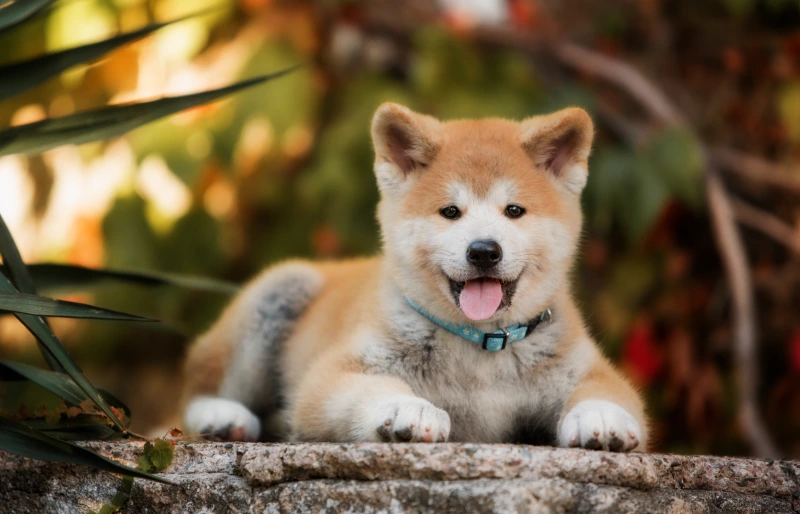
One look at a Japanese Akita Inu, and it’s hard not to fall in love. These dogs have a luxurious thick coat that adds to their beautiful overall appearance. Of course, it also means they shed a ton, and there are a few other traits you need to be aware of.
Personality / Character
While a Japanese Akita is a super stubborn breed, don’t let that fool you about their overall personality. They’re incredibly loving, even if they don’t demand non-stop attention. The Japanese Akita Inu generally does well with children as long as there’s proper socialization, but this breed usually does not get along with other dog breeds, regardless of how much you socialize them.
They don’t bark a ton, but they’re not the quietest pup either. You can say the same thing with their energy levels. They need to get out some, but they don’t have the non-stop energy levels that you can find with some dog breeds.
Training
While there’s no doubt that you can train a Japanese Akita Inu to complete a wide array of tasks, it’s also no secret that it will take a bit of work and consistency to get there. These dogs are fiercely independent, and they have a notorious stubborn streak.
Still, they’re smart pups, so if you can stay consistent and break through this stubborn behavior, they can learn a wide array of tasks. But with a Japanese Akita, it’s best to convince them it’s something they want to do instead of trying to engage in a battle of wills with them.
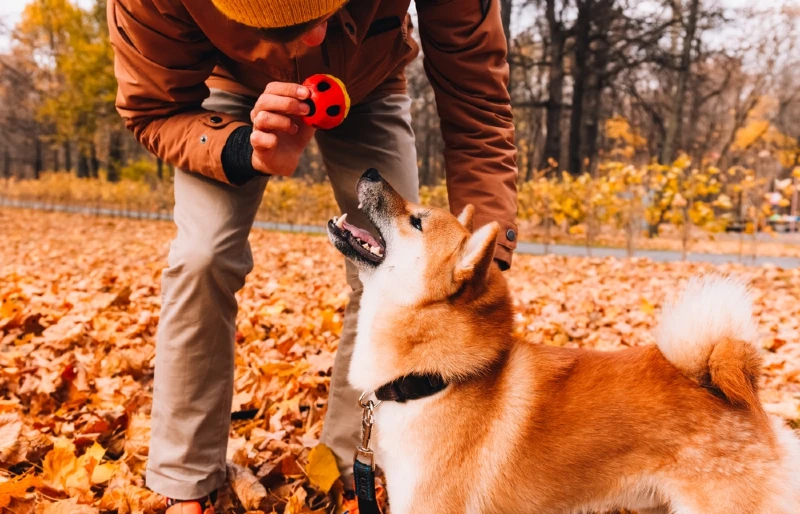
Size
Perhaps the most noticeable difference between Japanese and American Akitas is their size. Japanese Akita Inus tend to be a bit smaller than American Akitas, with their weight ranging between 55 and 75 pounds. But while they weigh significantly less, they’re not much shorter, still standing between 25 and 27.5 inches tall.
Suitable For:
The Japanese Akita Inu is an excellent dog choice for those without any other pets in their home, and we really only recommend them for experienced pet owners because of their stubborn streak. We also recommend introducing children to a Japanese Akita Inu before bringing them into your home.
American Akita Overview

While the most noticeable difference between a Japanese Akita Inu and an American Akita is their size difference, that’s far from the only difference between the two breeds. From different personalities to different energy levels, there’s quite a bit to break down for you here.
Personality / Character
The American Akita is a loving dog breed that generally gets along great with kids as long as you provide a little socialization. However, while they can get along great with kids, the American Akita generally does not get along well with other dogs or pets.
The American Akita is generally a pretty quiet dog, but they will bark at some things from time to time. Perhaps more importantly, the American Akita needs to get out a bit more, having higher energy levels than the Japanese Akita Inu.
If you’re looking for the most loving Akita, the American Akita might be it. They’re not quite as attention-demanding as some other dog breeds, but they’ll likely want more attention than other Akita breeds.
Training
While the American Akita certainly has a stubborn streak, it’s nothing compared to the Japanese Akita Inu. You can train the American Akita to complete a wide array of tasks, but you’ll still need to stay consistent with your training routine to get them to listen.
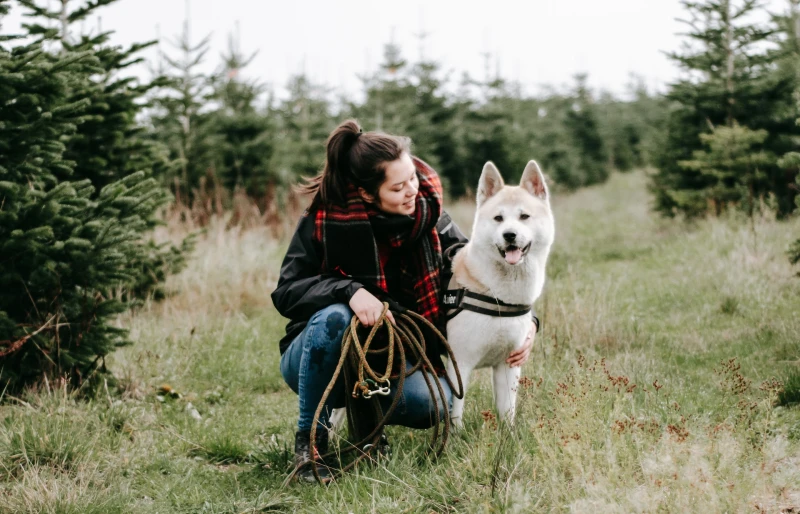
Size
By far, the most noticeable difference between a Japanese Akita Inu and an American Akita is their size. While a Japanese Akita Inu weighs between 55 and 75 pounds, an American Akita is much larger, weighing between 70 and 130 pounds.
But despite their larger weight, the American Akita stands around the same height as a Japanese Akita Inu, with an average height between 24 and 28 inches.
Suitable For:
The American Akita is a great pet choice if you don’t have any other pets in the home and if you have some experience with dogs already. They will generally get along with kids, but they do best if you have a home with a fenced-in yard where they can roam to get their energy out each day.
Which Breed Is Right for You?
While there’s no wrong choice between the American Akita and the Japanese Akita Inu, there might be a right and wrong choice for you. Neither breed does well with other pets, but if you don’t have a fenced-in yard, we highly recommend going with a Japanese Akita Inu instead of the larger and more active American Akita.
Just know that both breeds are really only best for experienced dog handlers, but this is especially true for the Japanese Akita Inu. They’re extremely stubborn and independent, making them a challenge for even the most experienced handlers.
Featured Image Credit: Left – Charlotte Rush, Unsplash | Right – otsphoto, Shutterstock



